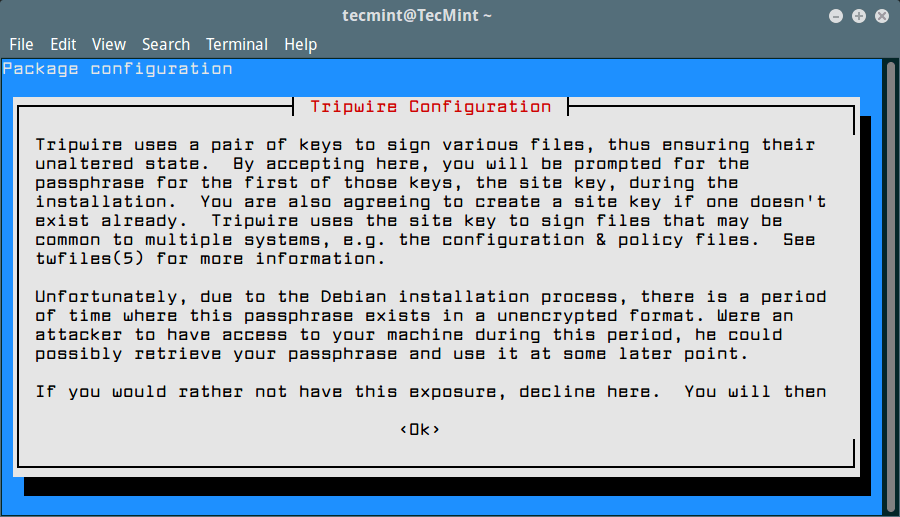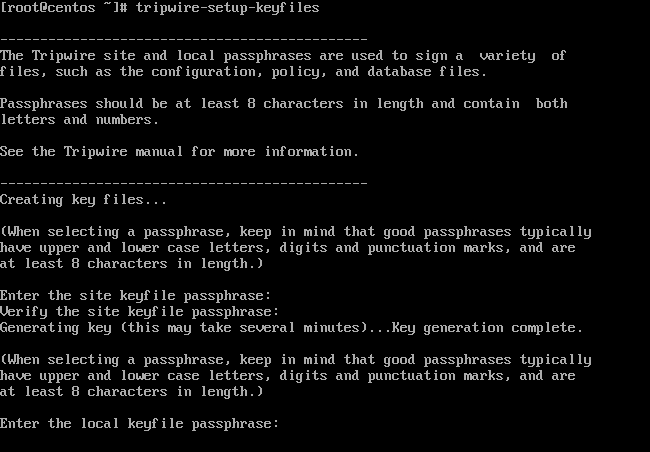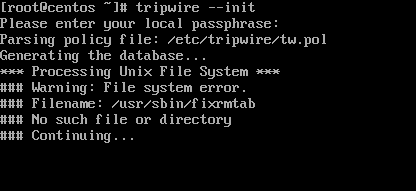Detecting Attackers with Tripwire
Tripwire is a powerful tool that protects your systems against unwanted changes.
The Internet is awash in intrusion opportunities. One unpatched exploit can let an intruder slip through the perimeter defenses. As a result, computers owned by unsuspecting citizens and businesses can mutate into spam slingers, distributing malicious programs or spying on users. How do you know if an intruder is on your computer? The host-based intrusion detection system Tripwire quietly monitors the filesystem and promptly notifies you in case of any changes.
Numerous IDS systems exist for the free Linux operating system, both for whole networks (Network-based Intrusion Detection System, NIDS) and for individual hosts (Host-based Intrusion Detection System, HIDS). The first category includes Snort, Suricata, and Prelude, which ideally detect attacks on entire networks. The second category includes applications such PortSentry, Logcheck, Samhain, OSSEC, and, last but not least, Tripwire.
Tripwire is a file integrity checker. The system was developed in 1992 by Gene Kim and Dr. Eugene Spafford at Purdue University. Since 1999, Tripwire Inc. has further developed the application as Tripwire Enterprise.
The Tripwire Open Source Project was launched in 2002 and uses Tripwire sources from 2000 as its basis. According to Tripwire Inc., the Tripwire program is suitable for small networks that do not require centralized management and reporting capabilities.
Attackers usually try to contaminate a hijacked system with trojans, backdoors, and manipulated files. Tripwire helps to prevent this problem by encrypting information (checksums, file sizes, Mtime, ctime, inode, etc.) and important directories and files and storing the information in a database. The program then compares these identifying parameters with the properties of the monitored files and notifies the admin of any deviations. Ideally, everything is fine and the report is concise. Slightly longer reports occur when files have been altered intentionally or unintentionally.
Operating on this principle offers the advantage that you can make the comparison discreetly on a regular basis or upon suspicion of a break-in. The IDS uses very few system resources and is thus not usually noticeable as a running process. False alarms occur relatively infrequently. Administrators usually know that Tripwire is monitoring their servers, and they can quickly update its databases or determine whether they are responsible for a reported change.
Or course, Tripwire cannot warn the admin while a potential attack is taking place; it can only log its consequences. Once Tripwire sends a message about an unauthorized change to the administrator, the assumption must be that the attack was successful.
The main repositories of the major distributions do not usually include Tripwire. Ubuntu only provides the latest version in the Universe branch of Saucy Salamander (13.10). OpenSUSE keeps Tripwire in the security repository, meaning you need to install retrospectively. The program performs its tasks very well; thus, developers do not need to produce new versions constantly. The current version is 2.4.2.2, which you can build and install from the source code with the typical three steps.
# ./configure && make && make install
During installation, Tripwire creates a site key and a local key. The former is used to sign the configuration and policy files, the latter to protect the Tripwire database. If you forgot to generate the key during installation, you can use the commands in Listing 1 to catch up.
Listing 1: Generate Keys
# twadmin --generate-keys --site-keyfile /etc/tripwire/site.key # twadmin --generate-keys --local-keyfile /etc/tripwire/$HOSTNAME-local.key
The same rules apply to passphrases as to any good passwords: More than eight characters and a mix of uppercase and lowercase letters and special characters enhance security.
You may also need to modify the /etc/tripwire/twcfg.txt file. This is where you enter the path to the key files, the policies, the database, and the reports. You can use other variables to set the default editor (EDITOR) and specify whether Tripwire should wait as long as possible until requiring password input from the user LATEPROMPTING). Additionally, double messages (file, directory) in case of changes to a monitored file can be prevented here (LOOSEDIRECTORYCHECKING).
Because Tripwire is often launched on remote servers as a cronjob, it may be useful also to send email notifications if everything is okay (MAILNOVIOLATIONS=true). The absence of a message means that you can expect the worst.
The report levels define how extensive the reports should be (see Table 1). You can also define the type (SMTP or sendmail) and the server required for mail delivery.
Table 1: Report Levels
Summary in one line; lists the number of changes, additions, and deletions
How to Install Tripwire IDS (Intrusion Detection System) on Linux
Tripwire is a popular Linux Intrusion Detection System (IDS) that runs on systems in order to detect if unauthorized filesystem changes occurred over time.
In CentOS and RHEL distributions, a tripwire is not a part of official repositories. However, the tripwire package can be installed via Epel repositories.
To begin, first install Epel repositories in CentOS and RHEL system, by issuing the below command.
After you’ve installed Epel repositories, make sure you update the system with the following command.
After the update process finishes, install Tripwire IDS software by executing the below command.
Fortunately, Tripwire is a part of Ubuntu and Debian default repositories and can be installed with the following commands.
$ sudo apt update $ sudo apt install tripwire
On Ubuntu and Debian, the tripwire installation will be asked to choose and confirm a site key and local key passphrase. These keys are used by tripwire to secure its configuration files.
On CentOS and RHEL, you need to create tripwire keys with the below command and supply a passphrase for site key and local key.
In order to validate your system, you need to initialize the Tripwire database with the following command. Due to the fact that the database hasn’t been initialized yet, a tripwire will display a lot of false-positive warnings.
Finally, generate a tripwire system report in order to check the configurations by issuing the below command. Use —help switch to list all tripwire check command options.
# tripwire --check --help # tripwire --check
After tripwire check command completes, review the report by opening the file with the extension .twr from /var/lib/tripwire/report/ directory with your favorite text editor command, but before that you need to convert to text file.
# twprint --print-report --twrfile /var/lib/tripwire/report/tecmint-20170727-235255.twr > report.txt # vi report.txt
That’s It! you have successfully installed Tripwire on the Linux server. I hope you can now easily configure your Tripwire IDS.



